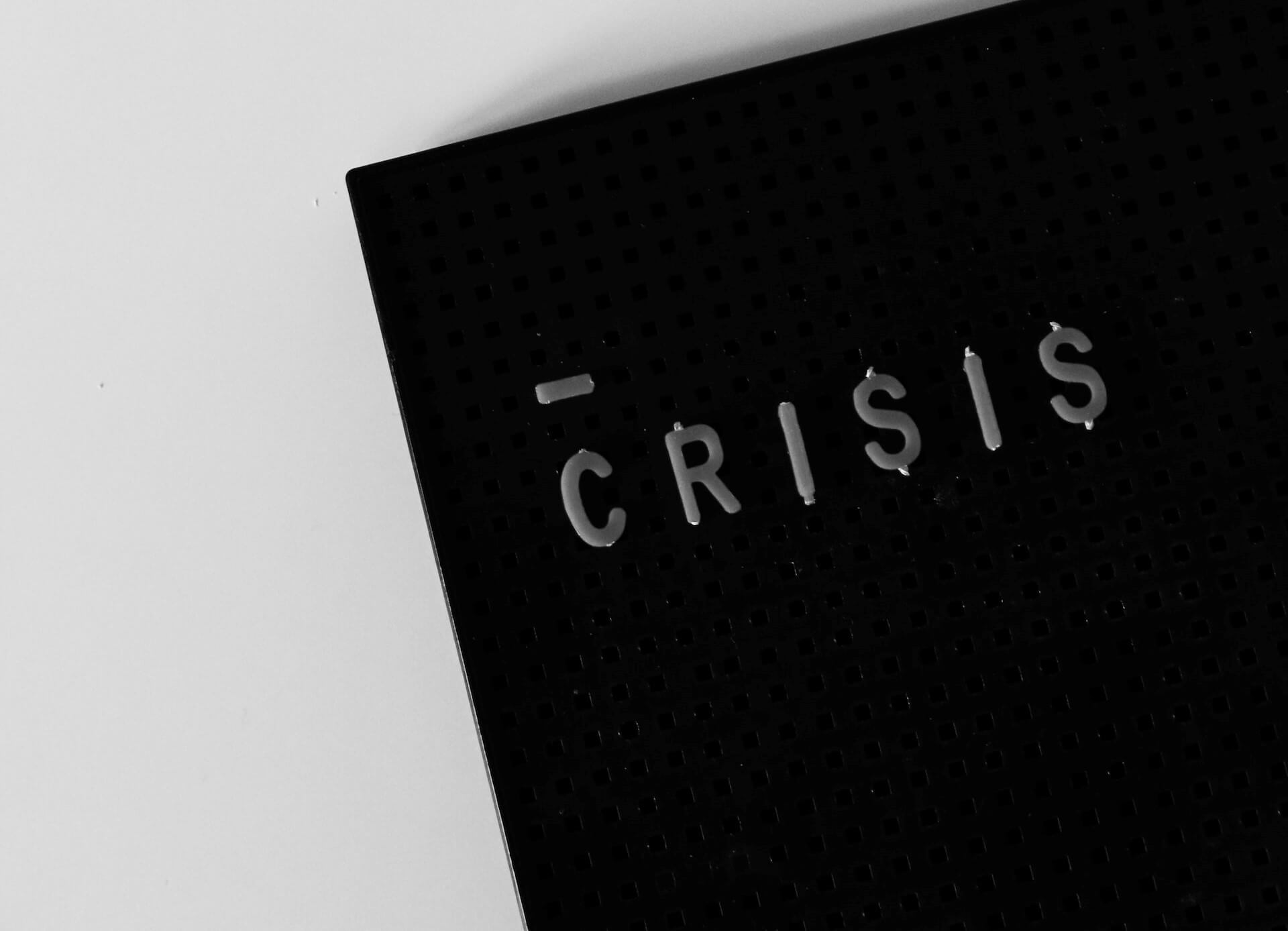Sections of This Topic Include
- 10 Steps of Crisis Communications
- Guidelines for Successful Crisis Management
- Guidelines for Successful Social Crisis Planning
- Examples of Organizations’ Successful — and Unsuccessful — Crisis Management
Also, consider
- Crisis Management: Advice about responding to a crisis, once it’s already occurred
- Business Insurance: Guidelines and advice about buying various kinds of insurance
- Risk Management: Guarding against theft, fire, disasters, etc.
- Safety in the Workplace: About types of workplace injuries, programs to reduce accidents, etc.)
- Protecting or Repairing Your Reputation
- Related Library Topics
Learn More in the Library’s Blogs Related to Crisis Management
In addition to the articles on this current page, also see the following blogs that have posts related to Crisis Management. Scan down the blog’s page to see various posts. Also, see the section “Recent Blog Posts” in the sidebar of the blog or click on “Next” near the bottom of a post in the blog. The blog also links to numerous free related resources.
The 10 Steps of Crisis Communications
By Jonathan L. Bernstein (Update 2016 by Jonathan Bernstein. All rights reserved.)
Crisis: Any situation that is threatening or could threaten to harm people or property, seriously interrupt business, significantly damage reputation and/or negatively impact the bottom line.
Every organization is vulnerable to crises. The days of playing ostrich – burying your head in the sand and hoping the problem goes away – are gone. You can try, but your stakeholders will not be understanding or forgiving because they’ve watched what happened with Volkswagen, Chipotle, FIFA, and Lance Armstrong.
If you don’t prepare, you will incur more damage. When I look at existing crisis management-related plans while conducting a vulnerability audit (the first step in crisis preparedness), what I often find is a failure to address the many communications issues related to a crisis or disaster response. Experience demonstrates that organizational leadership often does not understand that in the absence of adequate internal and external communications:
- The operational response will break down.
- Stakeholders will not know what is happening and quickly become confused, angry, and negatively reactive.
- The organization will be perceived as inept, at best, and criminally negligent, at worst.
- The length of time required to bring full resolution to the issue will be extended, often dramatically.
- The impact to the financial and reputational bottom line will be more severe.
The basic steps of effective crisis communications are not difficult, but they require advanced work in order to minimize damage. So if you’re serious about crisis preparedness and response, read and implement these 10 steps of crisis communications, the first seven of which can and should be undertaken before any crisis occurs.
PRE-CRISIS
1. Anticipate Crises
If you’re being proactive and preparing for crises, gather your Crisis Communications Team for intensive brainstorming sessions on all the potential crises that could occur in your organization.
There are at least two immediate benefits to this exercise:
- You may realize that some of the situations are preventable by simply modifying existing methods of operation.
- You can begin to think about possible responses, best-case/worst-case scenarios, etc. Better now than when under the pressure of an actual crisis.
In some cases, of course, you know a crisis will occur because you’re planning to create it – e.g., to lay off employees, or to make a major acquisition.
There is a more formal method of gathering this information I call a “vulnerability audit,” which information is available here.
This assessment process should lead to creating a Crisis Response Plan that is an exact fit for your organization, one that includes both operational and communications components. The remaining steps, below, outline some of the major topics that should be addressed in the communications section of the plan.
2. Identify Your Crisis Communications Team
A small team of senior executives should be identified to serve as your organization’s Crisis Communications Team. Ideally, the organization’s CEO will lead the team, with the firm’s top public relations executive and legal counsel as his or her chief advisers. If your in-house PR executive does not have sufficient crisis communications expertise, he or she may choose to retain an agency or independent
consultant with that specialty. Other team members are typically the heads of your major organizational divisions, as any situation that rises to the level of being a crisis will affect your entire organization. And sometimes, the team also needs to include those with special knowledge related to the current crisis, e.g., subject-specific experts.
Let me say a word about legal counsel. Historically, I used to have to do a lot of arm-wresting with attorneys over strategy and messaging. They were focused strictly on the court of law and, of course, a crisis manager is focused primarily on the court of public opinion. More and more lawyers understand that the organization in crisis can be destroyed in the court of public opinion years before the legal process plays out. And attorneys have also come to understand that, while “no comment” translates as “we’re guilty or hiding something” to the public, there are a lot of ways to say very little without compromising legal matters, while still appearing responsive to those seeking more information.
Remember this – entire countries and causes have had their ambitions thwarted, or aided, as a consequence of their trials in the court of public opinion.
3. Identify and Train Spokespersons
Categorically, any organization should ensure, via appropriate policies and training, that only authorized spokespersons speak for it. This is particularly important during a crisis. Each crisis communications team should have people who have been pre-screened, and trained, to be the lead and/or backup spokespersons for different channels of communication.
All organizational spokespersons during a crisis situation must have:
- The right skills
- The right position
- The right training
The Right Skills
I’ve met senior-level corporate executives who could stand up in front of a 1,000-person conference audience without a fear and perform beautifully – but who would get virtual lockjaw when they knew a camera was pointed their way for a one-on-one interview.
I’ve also known very effective written communicators who should probably never do spoken interviews because they’re way too likely to “step in it” using that format. These days, spokesperson responsibilities invariably include online communication, and social media is a very easy place to make a mistake.
Matching potential spokespersons’ skills with their assignments as a member of the Crisis Communications Team is critical.
The Right Position
Some spokespersons may naturally excel at all forms of crisis communications – traditional media, social media, B2B, internal, etc. Others may be more limited. Only certain types of highly sensitive crises (e.g., ones involving significant loss of life) virtually mandate the chief executive be the lead spokesperson unless there is very good cause to the contrary.
The fact is that some chief executives are brilliant organizational leaders but not very effective in-person communicators. The decision about who should speak is made after a crisis breaks – but the pool of potential spokespersons should be identified and trained in advance.
Not only are spokespersons needed for media communications, but for all types and forms of communications, internal and external. This includes on-camera, at a public meeting, at employee meetings, etc. You really don’t want to be making decisions about so many different types of spokespersons while “under fire.”
4. Spokesperson Training
Two typical quotes from well-intentioned executives summarize the reason why your spokespersons should receive professional training in how to speak to the media:
“I talked to that nice reporter for over an hour and he didn’t use the most important news about my organization.”
“I’ve done a lot of public speaking. I won’t have any trouble at that public hearing.”
Regarding the first example, there have hundreds of people skewered by CBS’ “60 Minutes” or ABC’s “20/20” who thought they knew how to talk to the press. In the second case, most executives who have attended a hostile public hearing have gone home wishing they had been wearing a pair of Depends. They didn’t learn, in advance, the critical differences between proactive PR, which focuses on promoting your organization, and crisis communications, which focuses on preserving your organization.
All stakeholders, internal and external, are just as capable of misunderstanding or misinterpreting information about your organization as the media. It’s your responsibility to minimize the chance of that happening.
Spokesperson training teaches you to be prepared, to be ready to respond in a way that optimizes the response of all stakeholders.
5. Establish Notification and Monitoring Systems
Notification Systems
Remember when the only way to reach someone quickly was by a single phone or fax number, assuming they were there to receive either?
Today, we need to have – immediately at hand – the means to reach our internal and external stakeholders using multiple modalities. Many of us have several phone numbers, more than one email address, and can receive SMS (text) messages or faxes. Instant Messenger programs, either public or proprietary, are also very popular for business and personal use. We can even send audio and video messages via email. And then, of course, there is social media. This may be the best/fastest way to reach some of our stakeholders, but setting up social media accounts for this purpose and developing a number of followers/friends/contacts on the various social media platforms (e.g., Facebook, LinkedIn, Google+) is not something you can do after a crisis breaks, because nowhere does news of a crisis spread faster and more out of your control than on social media.
Depending on how “techie” we choose to be, all of this type of communication – and more – may be received on or sent by a single device!
It is absolutely essential, pre-crisis, to establish notification systems that will allow you to rapidly reach your stakeholders using multiple modalities. The Virginia Tech campus shooting catastrophe, where email was the sole means of alerting students initially, proves that using any single modality can make a crisis worse. Some of us may be on email constantly, others not so. Some of us receive our cellphone calls or messages quickly, some not. If you use more than one modality to reach your stakeholders, the chances are much greater that the message will go through.
For a long time, those of us in crisis management relied on the old-fashioned “phone tree” and teams of callers to track people down. Fortunately, today there is technology – offered by multiple vendors for rent or purchase – that can be set up to automatically start contacting all stakeholders in your pre-established database and keep trying to reach them until they confirm (e.g., by pressing a certain number on a phone keypad) that the message has been received. Technology you can trigger with a single call or email.
Monitoring Systems
Intelligence gathering is an essential component of both crisis prevention and crisis response.
Knowing what’s being said about you on social media, in traditional media, by your employees, customers, and other stakeholders often allows you to catch a negative “trend” that, if unchecked, turns into a crisis.
Likewise, monitoring feedback from all stakeholders during a crisis situation allows you to accurately adapt your strategy and tactics.
Both require monitoring systems be established in advance. For traditional and social media, Google Alerts are the no-cost favorite, but there are also free social media tracking apps such as Hootsuite. There a variety of paid monitoring services that provide not only monitoring, but also the ability to report results in a number of formats. Monitoring other stakeholders means training personnel who have front-line contact with stakeholders (e.g., Customer Service) to report what they’re hearing or seeing to decision-makers on your Crisis Communications Team.
6. Identify and Know Your Stakeholders
Who are the internal and external stakeholders that matter to your organization? I consider employees to be your most important audience, because every employee is a PR representative and crisis manager for your organization whether you want them to be or not! But, ultimately, all stakeholders will be talking about you to others not on your contact list, so it’s up to you to ensure that they receive the messages you would like them to repeat elsewhere.
7. Develop Holding Statements
While full message development must await the outbreak of an actual crisis, “holding statements,” messages designed for use immediately after a crisis breaks, can be developed in advance to be used for a wide variety of scenarios to which the organization is perceived to be vulnerable, based on the assessment you conducted in Step 1 of this process. An example of holding statements by a hotel chain with properties hit by a natural disaster, before the organization’s headquarters has any hard factual information, might be:
“We have implemented our crisis response plan, which places the highest priority on the health and safety of our guests and staff.”
“Our thoughts are with those who were in harm’s way, and we hope that they are well.” “We will be supplying additional information when it is available and posting it on our website.”
The organization’s Crisis Communications Team should regularly review holding statements to determine if they require revision and/or whether statements for other scenarios should be developed.
POST-CRISIS
8. Assess the Crisis Situation
Reacting without adequate information is a classic “shoot first and ask questions afterwards” situation in which you could be the primary victim. However, if you’ve done all of the above first, it’s a “simple” matter of having the Crisis Communications Team on the receiving end of information coming in from your team members, ensuring the right type of information is being provided so you can proceed with determining the appropriate response.
Assessing the crisis situation is, therefore, the first crisis communications step you can’t take in advance. If you haven’t prepared in advance, your reaction will be delayed by the time it takes your in-house staff or quickly hired consultants to run through steps 1 to 7. Furthermore, a hastily created crisis communications strategy and team are never as efficient as those planned and rehearsed in advance.
9. Finalize and Adapt Key Messages
With holding statements available as a starting point, the Crisis Communications Team must continue developing the crisis-specific messages required for any given situation. The team already knows, categorically, what type of information its stakeholders are looking for. What should those stakeholders know about this crisis? Keep it simple. Have no more than three main messages that go to all stakeholders and, as necessary, some audience-specific messages for individual groups of stakeholders. You’ll need to adapt your messaging to different forms of media as well. For example, crisis messaging on Twitter often relies on sharing links to an outside page where a longer message is displayed, a must because of the platform’s 140 character limit.
10. Post-Crisis Analysis
After the cowpies are no longer interacting with the air-circulating device, the question must be asked, “What did we learn from this?”
A formal analysis of what was done right, what was done wrong, what could be done better next time and how to improve various elements of crisis preparedness is another must-do activity for any Crisis Communications Team. I have developed a formal process for accomplishing this, but even a solid in- house brainstorming session can do the job.
“It Can’t Happen To Us”
When a healthy organization’s CEO or CFO looks at the cost of preparing a crisis communications plan, either a heavy investment of in-house time or retention of an outside professional for a substantial fee, it is tempting for them to fantasize “it can’t happen to us” or “if it happens to us, we can handle it relatively easily.”
Hopefully, that type of ostrich emulation is rapidly becoming a thing of the past. Yet I know when all is said and done, thousands of organizations hit by natural and man-made disasters will have suffered far more damage than would have occurred with a fully developed crisis communications plan in place. This has also been painfully true for scores of clients I have served over the past 30+ years. Even the best crisis management professional is playing catch up – with more damage occurring all the time – when the organization has no crisis communications infrastructure already in place.
The Last Word – For Now
I would like to believe organizations worldwide are finally “getting it” about crisis preparedness, whether we’re talking about crisis communications, disaster response or business continuity. Certainly, client demand for advance preparation has increased dramatically in the past decade, at least for my consultancy. But I fear there is, in fact, little change in what I have said in the past – that 95 percent of American organizations remain either completely unprepared or significantly under-prepared for crises. And my colleagues overseas report little better, and sometimes worse, statistics.
Choose to be part of the prepared minority. Your stakeholders will appreciate it!
Guidelines for Successful Crisis Management
The following links are to a wide variety of guidelines for successful crisis management that will avoid crisis management mess. Many of the articles include real-life examples of success.
Recommended Articles
- What Really Constitutes a Business Crisis?
- Crisis Management
- Making a Statement
- Are You a Crisis Manager?
- Coping with catastrophe: what keeps us going in the face of adversity?
- Managing in Crisis
- Your Crisis Communication Response Plan is Due for Maintenance (And/Or a Rewrite)
- Questions to Avoid Crises
- Prevent and React
Additional Articles
- Who Does What?
- Turning a Public Crisis Around
- The Crisis Counselor
- The Doctor Recommends Crisis Prevention – But It’s Your Choice
- Information Security as Crisis Prevention (video)
- Crisis Simulation
- The Right Steps
- Take Advantage of Crises to Grow and Learn
- Crisis Management and Customer Service
- After A Crisis
- Various Manuals for Crisis Interventions
- Questions to Avoid Crisis
- Reality of Communication
- Training to Prevent Disasters — Not Just the Job of TSA
- Turning a Liability into an Asset
- Proactive Crisis Management
- Avoiding Pain
- Crisis Leadership
- Transparency in Crisis
- Can You Simulate a PR Crisis and Then Handle the Real Thing?
- Your Crisis Communication Response Plan is Due for Maintenance (And/Or a Rewrite)
- Fix the Problem
- Prevent and React
- Crises Cost $56 Billion in First Half of 2013
- BIMBO of the Year 2013
- Online Crisis Management Tools
- Honest Insurance?
- Crisis on Stage
- The Human Touch
- Coping with Tragedy
- Take Responsibility
- Ready and Able
- Three-Act Crises
- Own It
- Learning from Crisis
- Prepare With Dark Sites
- Real Crisis Management
- Simplify and Repeat
- Have a Plan
- Reputation Combat
- Are You Vulnerable?
- Bring On The Hate
- Crafting the Ideal Apology
- Role Responsibility
- Rumor and Innuendo
- When Share Price Puts a Value on Brand Reputation
- Business as Usual
- 10 Ways to Ruin Your Company’s Communications Efforts
- Don’t Tip Your Hand
- Red Cross UK Disaster Challenge
- You Know What You’re Talking About, Right?
- Bird Flu Breakout
- Caribbean Cops Get Crisis Communications Training
- The Digital Media Law Project
- FEMA’s Pledge to Prepare
- High-Speed Crisis Management
- Shoe Shackles Raise Consumer’s Hackles
- Video Crisis Management
- Paterno Family’s Reputation Management no Touchdown
- Romney Film Reveals Crisis Management Risk
- Calm Yourself Through Crisis
- Hotel Hacker Exposes E-Vulnerabilities
- Make Your Apology Mean Something
- Short Term/Long Term
- The Crisis Show
- The Crisis Show Ep. 2 – Crises, Crises, Everywhere!
- The Crisis Show Ep. 3 –
- Data Jackings and #Fail Tweets
- The Crisis Show Ep. 4 –
- Corporate Crises
- The Crisis Show Ep. 6 –
- Colorado, Tony Robbins, Olympics & Penn State
- The Crisis Show Ep. 9 –
- Back to School
Also consider
- Social Networking and Social Media
- Public and Media Relations (including online reputation management)
Guidelines for Successful Social Crisis Planning
Copyright Jonathan L. Bernstein
As it stands today, crisis management is very much entwined with social media. Whether you like it or not, when trouble hits you’ve got to quickly meet your stakeholders in the places they frequent in order to maintain control of your story, and that means being ready. In an article for business2community.com,
David Vap provided some solid tips for getting your organization in a position to handle social crises:
- Understand your organization. Review external communication processes, social capabilities, and corporate culture. This is where we recommend scenario planning. Key questions could include: how would we respond if a vocal customer complaint suddenly went viral? How would we respond to a brandjacking attack?
- Create a new social mindset in your organization. The social shift calls for a mindset characterized by transparency, accountability, employee empowerment, and planned spontaneity. Technology is certainly a crucial component of dealing with crisis communication, but preparing processes and practices must come first.
- Know your consumers. Listen to conversations unfolding on the social web about your brand, and respond/employ proactive social support. Also, identify your customer advocates on the social web – they will be invaluable in the event of a crisis.
- Form a social crisis team. A successful social strategy must cross the boundaries of department and hierarchy because consumers expect a seamless experience. Build a cross-functional team, including a social media manager, a product owner, and at least one executive sponsor. Draw up a social team charter to clarify roles and responsibilities and create an internal collaboration space for this team.
- Roll out a social crisis communications plan. Develop a playbook with guidelines for the social crisis team. Define an escalation process for potential PR issues. Build feedback into every step so you can adapt. Your plan needs to think through three areas – process and culture (what / who needs to change), technologies and tools (what to use to get there), and key metrics (what to track).
I especially like this list because of step two, “Create a new social mindset in your organization.” Far too many businesses create social media accounts and install fancy managing programs but neglect proper training and education, not only stifling possible gains but also creating the risk of improper use, which raises the chance of crisis even further.
- Uses of Social Media for Disaster Response
- Are You Prepared For a Social Media Crisis?
- Uses of Social Media for Disaster Response
- Avoiding Pain
- Transparency in Crisis
- Social Media in Emergencies
- How to Start a Social Media Crisis
- Qantas Neglects Twitter in Crisis
- Social Crisis Planning
- Social Management
- Twitter Mistakes to Avoid
- Blogging for Crisis Management
- Getting Started with Social Media
- Crisis Communication via Twitter
- Fight Back with Social Media
- Putting Out Fires with Twitter
- Tech to the Rescue
- Rounding Up Rumors
- Disaster Management
- Emergency Twitter Tips
- FEMA and Social Media vs. Irene
- Define Your Goals for Social Media
- Twitter Underprepared for Censorship Backlash
- Social Media and You
- Social Media Crisis Management Strategies
- Social Media Preparedness
- $28k of Taxpayer Money to Tweet?
- Flinging Mud with SEO
- Listening for a Crisis
- Social Media and Your Next Crisis
- ASUS Fails at Social Media
- Handling Negative Comments
- Social Media for Reputation Repair
- The Outrage Trap: How You Get Turned into a Dupe by Political and Activist Groups
- One’s Missed Opportunity is Another’s Brilliant PR
- When Deleting Social Media Comments is OK
- Winnie the Pooh on Social Media
- Social Media Throwdown: Netflix v. SEC
Examples of Organizations’ Successful — and Unsuccessful — Crisis Management
One of the best ways to learn is from the mistakes of others. The following links are too many examples of crisis management done poorly.
- Chevron Gets Pranked
- Qantas Neglects Twitter in Crisis
- Monkey Business at the Better Business Bureau
- Air New Zealand Shows How to Fight Back
- Dell Has a New Crisis
- Man Declared Dead Too Soon
- Bad Guys Lose with Google
- Anti-Bimbos
- Bad Crisis Communications Hurts Electronics Manufacturers
- Most Hated Companies
- Twitter or the Web?
- Storing Good Will
- Charlie Sheen — Misunderstandings about Addiction and Crisis
- Crisis Leadership in Japan
- Celeb Denies Make-A-Wish
- If You Lie Down With Dogs
- Southwest ™ Sub-Par Crisis Management
- Lessons from P&G
- Playstation Network Breach
- Southwest Gets It Right
- Impostors
- Zombies Attack
- Weiner Scandal
- Almost Good Crisis Management
- Delta Drops Fees, Learns Lesson
- E.coli Crisis
- Responsible Behavior
- Nikon Averts Facebook Crisis
- Penn State Crisis Management — ESPN Interview with Jonathan Bernstein
- USAJobs Controversy
- BofA Gets Brandjacked
- GM’s Crisis Management
- Kansas Gov. Bungles Social Media Crisis Management
- Can Apologies Be Funny?
- Don’t Let Reputation Damage Become Disaster
- NY Times Pays for Errant Email
- Ryan Braun: Victim or Villain?
- Talk About Transparency!
- Citibank – A Grimm Fairy Tale
- Crisis Management During Hard Times
- Crisis Management from the Marine Corps
- Dane Elicits Pain About Obama’s Public Speaking
- How To Say No Comment Without Saying No Comment
- More Military Crisis Management
- Army General Neil Tolley Opens Mouth, Inserts Combat Boot, Endangers Secret Ops
- Citibank – A Grimm Fairy Tale (update)
- Correcting a Customer Complaint Crisis
- How You Can Cause a Crisis by Giving Someone the Finger
- Is Siri Stalking You?
- Glaxo’s $3 Billion Deceit
- Toyota’s Crisis Management Runs Flat
- SumoSalad Hepatitis A Disaster
- Travelocity’ s Good Deed Goes Punished
- Crisis Management for Android in OS Wars
- GoDaddy Does Online Reputation Management
- Worried About Mass Shootings? Think Prevention
- Employee Error Dings Aussie Red Cross’s Reputation
- FEMA Combats Sandy Rumors Online
- When it’s OK to laugh, and when it’s not
- Quick Crisis Management from O2
- SeaWorld Makes a Whale of a Crisis Management Mistake
Also consider
- Preventing Violence in the Workplace
- Safety in the Workplace
- Crisis Manager Newsletter and various information on crisis management
- Free Crisis Management Training for Colleges and Universities
For the Category of Crisis Management:
To round out your knowledge of this Library topic, you may want to review some related topics, available from the link below. Each of the related topics includes free, online resources.
Also, scan the Recommended Books listed below. They have been selected for their relevance and highly practical nature.
 Sections of this topic
Sections of this topic
















